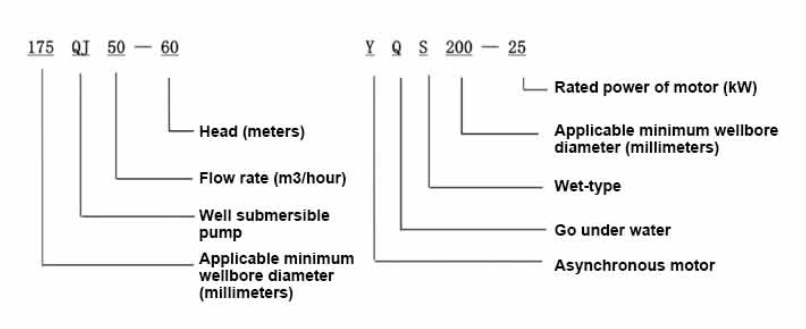Kas . 19, 2024 07:29 Back to list
1 hp vs 1.5 hp submersible pump
Comparison of 1 hp vs 1.5 hp Submersible Pumps
Submersible pumps are essential tools in various applications, such as dewatering, irrigation, and wastewater management. When choosing a submersible pump, one of the critical decisions is selecting the appropriate horsepower (hp) for your needs. This article provides a comparison between 1 hp and 1.5 hp submersible pumps, highlighting their benefits, key differences, and suitable applications.
Overview of Submersible Pumps
Submersible pumps are designed to be submerged underwater, allowing them to efficiently move liquids from one place to another. They operate by pushing the fluid to the surface rather than pulling it, which makes them effective in deep well applications. The horsepower rating of a pump is an important factor as it determines the pump's capacity to move water, manage the head (vertical distance), and deal with varying levels of viscosity and flow rates.
1 hp Submersible Pumps
A 1 hp submersible pump is typically suited for smaller applications. These pumps are versatile and can handle a flow rate of about 30 to 60 gallons per minute (GPM), depending on factors like head height and motor efficiency. They are ideal for residential use, such as draining flooded basements, small irrigation systems, and light domestic water supply needs.
Advantages of 1 hp submersible pumps include
1. Cost-Effectiveness They are generally cheaper to purchase and operate, making them an attractive choice for budget-conscious consumers. 2. Energy Efficiency Lower horsepower means less energy consumption, which can translate to lower electricity bills, especially in prolonged use scenarios. 3. Simplicity These pumps are often easier to install and maintain, making them suitable for homeowners who may prefer a DIY approach.
However, 1 hp pumps are not suitable for high-demand applications. Their limitations in flow rate and head height mean they might struggle in scenarios that require a powerful solution.
1 hp vs 1.5 hp submersible pump

1
.5 hp Submersible PumpsOn the other hand, a 1.5 hp submersible pump offers increased power and versatility. With a flow rate typically ranging from 50 to 100 GPM, these pumps are better suited for more demanding applications, including
- Larger residential properties with extensive irrigation systems - Construction sites requiring significant dewatering - Industrial applications involving wastewater management
The benefits of 1.5 hp submersible pumps include
1. Higher Flow Rates They can move a larger volume of water more quickly, making them preferable for higher capacity needs. 2. Greater Head Height These pumps can lift water from greater depths, addressing scenarios where the water source is located deep underground. 3. Durability and Longevity With more powerful motors, these pumps are typically built to withstand harsher conditions and can operate longer than lower horsepower models.
However, with increased power comes increased cost. The initial investment and operational costs are higher for 1.5 hp pumps, which may be a consideration for consumers with smaller needs.
Conclusion
Deciding between a 1 hp and a 1.5 hp submersible pump ultimately hinges on your specific requirements. If your application is smaller, infrequent, or budget-sensitive, a 1 hp pump can adequately meet your needs. Conversely, for larger projects or continuous operating demands, a 1.5 hp pump offers the power and efficiency required to get the job done.
In summary, both 1 hp and 1.5 hp submersible pumps have distinct advantages and limitations. Understanding these differences will help you make an informed decision, ensuring you select the right pump for your needs. Always consider not just the immediate requirements but also future needs as your project or situation evolves.
-
Submersible Water Pump: The Efficient 'Power Pioneer' of the Underwater World
NewsJul.01,2025
-
Submersible Pond Pump: The Hidden Guardian of Water Landscape Ecology
NewsJul.01,2025
-
Stainless Well Pump: A Reliable and Durable Pumping Main Force
NewsJul.01,2025
-
Stainless Steel Submersible Pump: An Efficient and Versatile Tool for Underwater Operations
NewsJul.01,2025
-
Deep Well Submersible Pump: An Efficient 'Sucker' of Groundwater Sources
NewsJul.01,2025
-
Deep Water Well Pump: An Efficient 'Sucker' of Groundwater Sources
NewsJul.01,2025
-
 Submersible Water Pump: The Efficient 'Power Pioneer' of the Underwater WorldIn the field of hydraulic equipment, the Submersible Water Pump has become the core equipment for underwater operations and water resource transportation due to its unique design and excellent performance.Detail
Submersible Water Pump: The Efficient 'Power Pioneer' of the Underwater WorldIn the field of hydraulic equipment, the Submersible Water Pump has become the core equipment for underwater operations and water resource transportation due to its unique design and excellent performance.Detail -
 Submersible Pond Pump: The Hidden Guardian of Water Landscape EcologyIn courtyard landscapes, ecological ponds, and even small-scale water conservancy projects, there is a silent yet indispensable equipment - the Submersible Pond Pump.Detail
Submersible Pond Pump: The Hidden Guardian of Water Landscape EcologyIn courtyard landscapes, ecological ponds, and even small-scale water conservancy projects, there is a silent yet indispensable equipment - the Submersible Pond Pump.Detail -
 Stainless Well Pump: A Reliable and Durable Pumping Main ForceIn the field of water resource transportation, Stainless Well Pump has become the core equipment for various pumping scenarios with its excellent performance and reliable quality.Detail
Stainless Well Pump: A Reliable and Durable Pumping Main ForceIn the field of water resource transportation, Stainless Well Pump has become the core equipment for various pumping scenarios with its excellent performance and reliable quality.Detail
